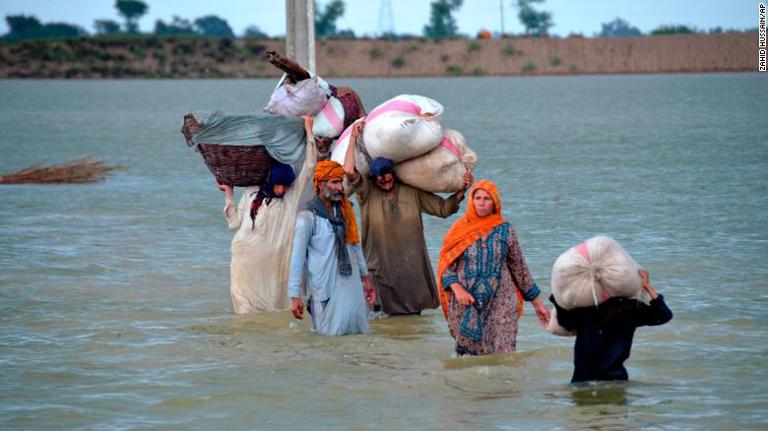At least 33 million people have been affected by deadly flooding in Pakistan, the country's climate change minister said on Thursday. Since mid-June, 937 people have died from severe rain and flooding across the South Asian country, according to the country's National Disaster Management Authority (NDMA).Sherry Rehman, the minister for climate change, called the floods "unprecedented" and "the worst humanitarian disaster of this decade."
"Pakistan is going through its eighth cycle of monsoon while normally the country has only three to four cycles of rain," Rehman said. "The percentages of super flood torrents are shocking."She highlighted in particular the impact on the south of the country, adding that "maximum" relief efforts are underway.

On August 24, Pakistan's Prime Minister Sharif briefed international diplomats on the crisis, stating that his country -- on the frontline of climate change despite a relatively small carbon footprint -- must focus its rehabilitation toward greater climate change resilience.
Minister for Planning and Development Ahsan Iqbal separately told Reuters that 30 million people had been affected, a figure that would represent about 15% of the South Asian country's population.
UN agency Office for the Coordination of Humanitarian Affairs (OCHA) said in an update on Thursday that the monsoon rains had affected some 3 million people in Pakistan of which 184,000 have been displaced to relief camps across the country.
Funding and reconstruction efforts will be a challenge for cash-strapped Pakistan, which is having to cut spending to ensure that the International Monetary Fund approves the release of much-needed bailout money.
The NDMA said in a report that in the past 24 hours, 150 kilometers (about 93 miles) of roads had been damaged across the country and more than 82,000 homes partially or fully damaged.
Since mid-June, when the monsoon began, more than 3,000 kilometers (1,864 miles) of road, 130 bridges and 495,000 homes have been damaged, according to NDMA's last situation report, figures also echoed in the OHCA report.
A vast majority of this damage is in Sindh. OCHA also warned that alerts had been issued for floods, river overflows, and landslides in several areas of Pakistan, and heavy rainfall was forecast for the next two days, too, over most of the country.
Rehman said Sindh has received 784% more rainfall this month than the August average, with 23 districts declared calamity-hit. Another of the hardest-hit areas has been in nearby Balochistan, with the province's capital city Quetta largely cut off from electricity, gas, and the internet.
Almost 500% more rainfall had fallen in the province, Rehman added, leading to electricity and gas services being suspended in most areas of Quetta since Thursday morning, according to the Provincial Disaster Management Authority.
Severe disruption to cell, internet, and landline phone services in the city have caused problems to rescue operations, leading the Balochistan government to request the Pakistan army's help in rescue efforts.
Sources:
CNN
https://edition.cnn.com/2022/08/25/asia/pakistan-flooding-climate-minister-intl-hnk/index.html .
Provided by the IKCEST Disaster Risk Reduction Knowledge Service System
Comment list ( 0 )
